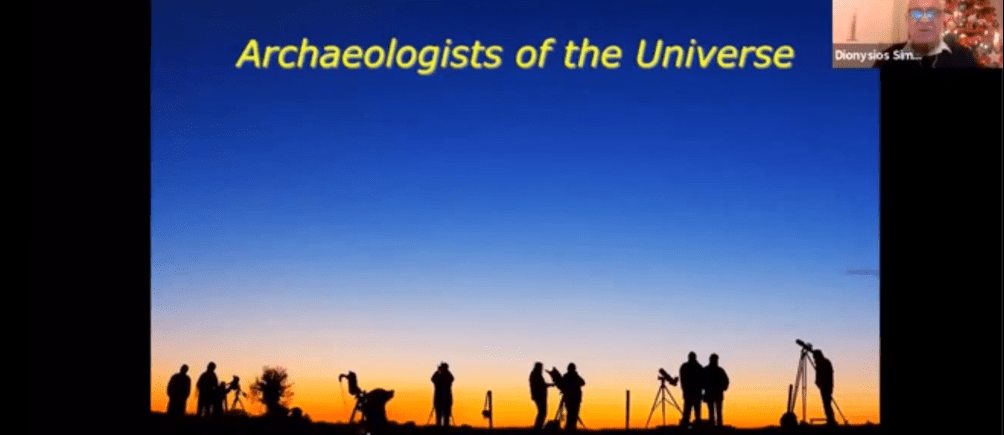
Alumni Event 2
In the last installment of CYA’s Virtual Lecture Series for the year 2020, Dionysis P. Simopoulos, astrophysicist, Director Emeritus of the Eugenides Planetarium in Athens, and vocal advocate for science education in Greece, examined the secrets of our universe.
In his lecture Discovering the Universe, Simopoulos guided attendees through the history of astronomy, the timeline of fundamental discoveries and theories about space and the universe, and looked to the future of space exploration and further developments in the field.
Catherine Vanderpool, former CYA Professor, archaeologist, and an emeritus member of the board of the Gennadius Library of the American School of Classical Studies, Athens, served as discussant for the virtual lecture.
Committed to making science and astronomy accessible to all, Simopoulos has published and released an abundant catalogue of media, from books to television appearances. In his virtual discussion, Simopoulos brought the vast expanses of the universe to the screens of all in attendance.
Simopoulos began by highlighting humankind’s persistent wonder, curiosity, and connection with the cosmos throughout history. It seems that man and the universe have an unbreakable link that inspires this consistent fascination with space, one that has inspired countless monumental scientific discoveriesMost notably, humanity’s understanding of space was significantly enriched by the boom of discoveries that came in the middle of the twentieth century..
The sheer amount of ground-breaking, innovative research and exploration that was conducted at the time enabled us to peer into the depths of space. The invention of radio telescopes, orbiting observatories and satellites, sent into space to help us view what was previously impossible to see, opened the world to the wonders of the universe.
The science developed to study space is not separated from our daily lives here on earth. Space exploration has contributed incalculably to fields such as telecommunications, medicine, and meteorology, all integral to our daily lives.
In a poetic explanation of the vast distances in space, Simopoulos stressed that those who study the universe are, in fact, archaeologists of the universe. Stars and planets are so far away from us, that when we see them, we’re seeing them as they were long ago, often millions of years ago.We even see the Sun, the closest star to us, as it was eight minutes and 19 seconds ago. Alpha Centauri, made up of three stars, is the closest star system to our solar system. When we look at Proxima Centauri, the closest star to us in the star system of Alpha Centauri at 40 trillion km away, we are really seeing it how it was over four months ago, as that is how long it takes for light from the star to reach us through the expanses of space.
Although scientists have made outstanding discoveries regarding space and our relationship with the universe in recent years, Simopoulos highlighted that one would be mistaken to assume that we have learned everything there is to know about the cosmos.
Much of the universe itself, nearly 95%, is made up of two materials we have no idea about—Dark energy and dark matter, opening up the next generation of scientists to make even more strides in the field.
∞
In our effort to stay connected with our community and engage with our students, alumni, friends, and partners during this pandemic, CYA launched its Virtual Lecture Series in celebration of the oldest study abroad program in Greece. Should you wish to, you may make a voluntary donation here to support CYA mitigate the current pandemic’s impact on our school.


